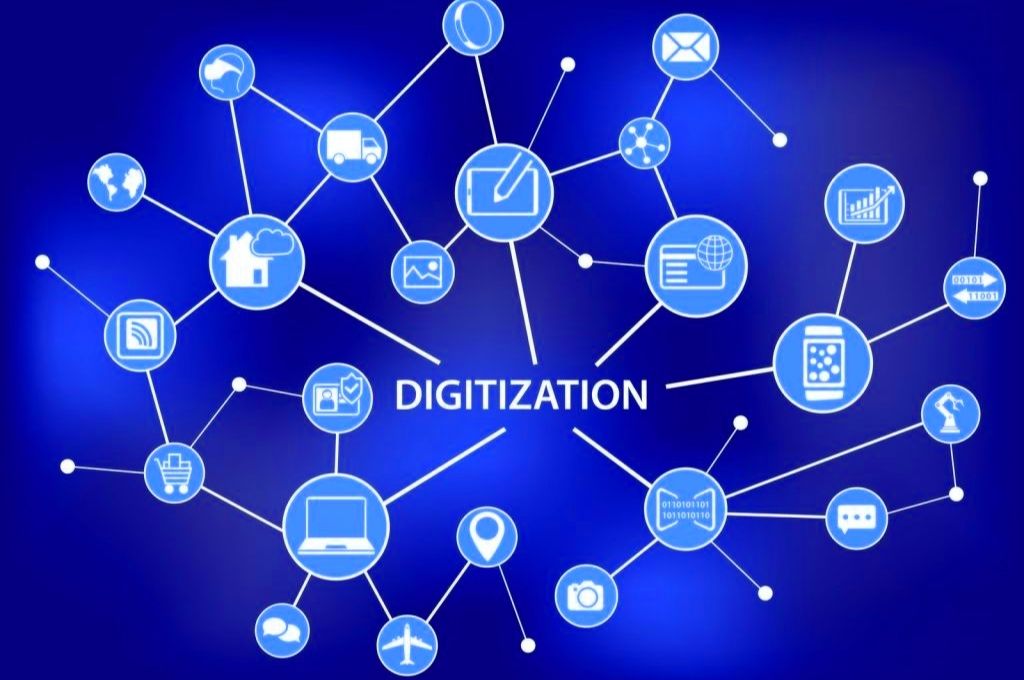To remain competitive in the digital transformation course, companies face significant challenges:
- New technologies have to be implemented.
- Business models have to be reconsidered.
- Processes have to be optimized.
At the same time, customer needs are changing, and new competitors are entering the market. Find out more about the seven most urgent challenges of digitization and how you can master them.
Challenge 1: Develop A Digital Strategy
Many companies do not have a higher-level digitization concept. Instead, individual departments develop solutions as required, but these are not coordinated with the other departments. Such a patchwork results in three main disadvantages:
Loss of productivity: For your organization to be as effective as possible in coping with digitization, it needs a clear digital mission statement. If this is not available, different stakeholders will make further assessments, for example, which innovation project is most urgent. In this way, you are spreading your strengths and resources instead of pooling them successfully.
Compatibility problems: If different departments work with varying software and hardware standards products, it becomes more challenging to share data or integrate new devices into the network.
High costs: Because similar solutions coexist, unnecessary fees are incurred. For example, license fees are paid for two comparable SaaS applications in parallel, although one of the two solutions would be sufficient.
Challenge 2: Initiate Innovations
Many new technologies are implemented too slowly or not at all in companies. Therefore, innovation management is one of the most significant challenges in digitization.
Since Corona at the latest, it has been clear that investments in innovations pay off. The cloud is an excellent example of the benefits of innovations: instead of purchasing and maintaining costly server landscapes, computing resources can be added and deducted as required. This avoids both capacity bottlenecks and high overheads in the company.
Challenge 3: Develop New Business Models
Many traditional business models no longer work as usual in the digital world. New digital models are in demand. The best-known example of this is e-commerce. Instead of buying goods in retail stores, customers prefer to order clothing or electronics in the online shop. In the B2B area, too, online ordering is increasingly replacing telephone contact with suppliers.
Another example is the entertainment sector. Netflix has questioned the TV broadcasters’ business model, and Spotify is now taking over many of the functions of the big music labels. In the tourism sector, Airbnb has taken market share from classic hotels. And Uber revolutionized the taxi industry with its business model.
Companies must, therefore, proactively develop digital business models to anticipate such disruptions. Otherwise, there is a risk of being reduced to a reactive role in the market.
Challenge 4: Perform Process Optimization
In addition to innovations and new business models, process optimization is one of the central challenges of digitization. Analog processes that used to take up a lot of time and workforce can now be automated. This applies, for example, to manual manufacturing steps in production or paper-based processes in administration.
Consistent process optimization saves resources and improves the customer experience simultaneously. However, implementation is still lacking in many companies. Processes are either not optimized at all or use data and system silos. This results in breaks in cross-organizational collaboration.
This digitalization challenge is not only directed inwards. Suboptimal processes also hurt the customer experience, for example, if spare parts cannot be ordered online or digital delivery tracking is not offered. In the worst case, the customer then migrates to the competition, offering more convenient processes.
Challenge 5: Do Change Management
Digital changes require change management. Otherwise, companies risk that the innovation will not be accepted internally due to reservations or even sabotaged. An example: Employees continue to use Excel tables instead of the new ERP system because they feel overwhelmed by many program functions.
In technical industries, in particular, some people in charge find it difficult to manage change. Because instead of analytical skills, “soft” factors such as empathy are required to identify unspoken fears.
Another difficulty: The change management measures are often imposed on employees in addition to their regular projects. But if the team has already worked at its capacity limit beforehand, there is simply no time to cope with the change, even if there is a willingness to do so.
Challenge 6: Ensure Data Security
The more our working world is digitized, the greater the risk of cyber-attacks and data loss. So-called ransomware, in particular, i.e., programs used to blackmail companies, is on the rise.
At the same time, the legal requirements for companies about data protection are increasing. For example, due to the GDPR, organizations now have to keep a processing directory to document the use of personal data. This is associated with considerable effort. This complex situation makes data security one of the most significant challenges of digitization.
Challenge 7: Enable Digital Collaboration
In times of the home office, companies have to deal more and more with digital collaboration challenges. The core question is: How do we ensure that everyone involved works together optimally, even if the team members are in geographically dispersed locations.
The answer is twofold: there is a technological and a social component. On the technical side, applications such as Slack, Yammer, or Microsoft Teams are trying to answer, especially since Corona with increasing success.
The social challenge is to create a team feeling despite the physical distance and to prevent loneliness in the home office. Most companies are currently still looking for strategies that work.
Also Read: Digitization In The Healthcare Environment





